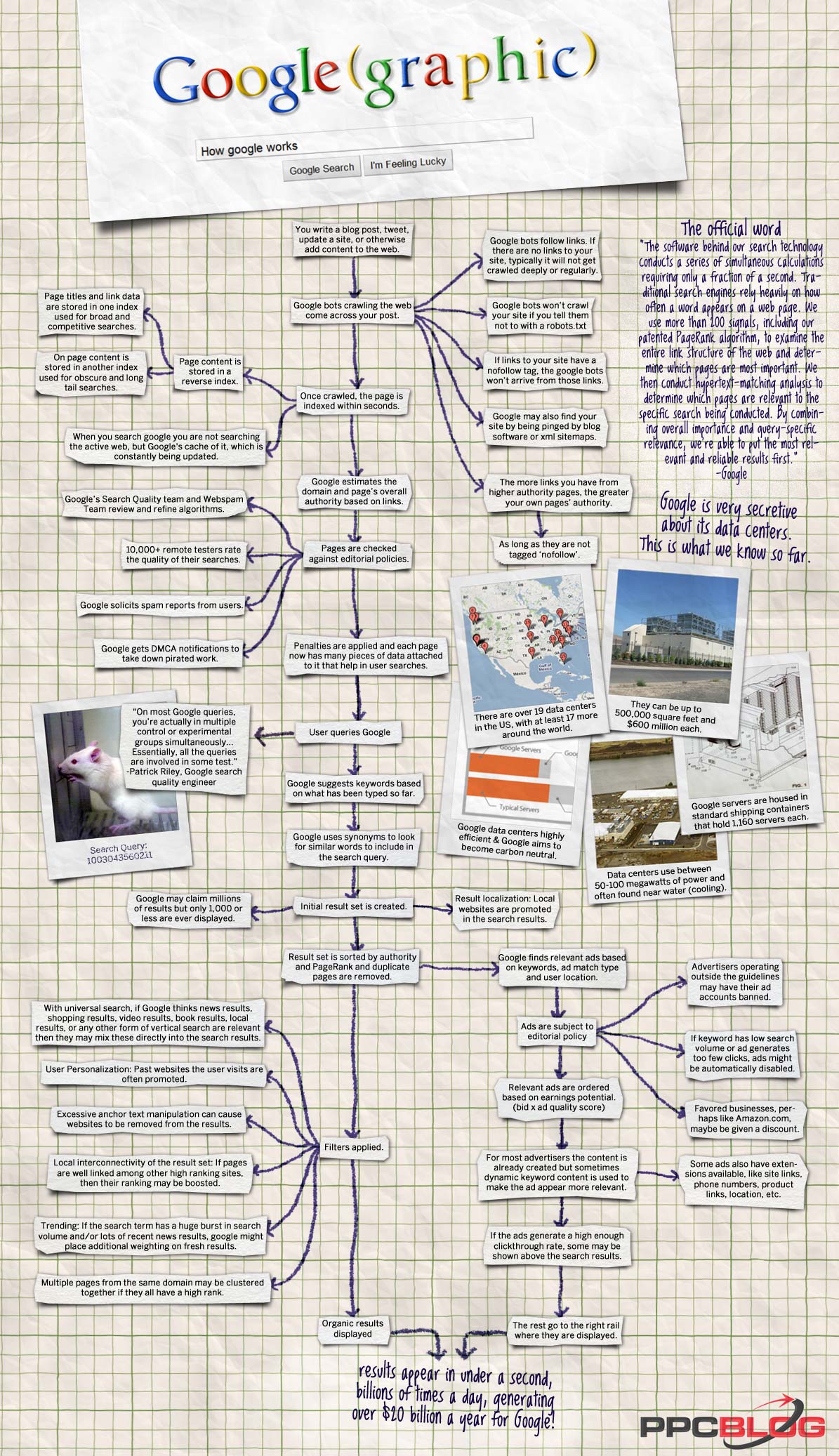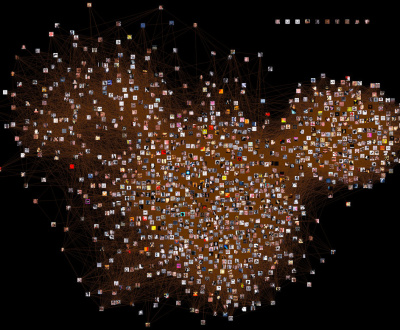I get a lot of questions from clients about how search engine optimization (SEO) works and what tips and tricks can help increase exposure on search engines. Sometimes it helps to take a few steps back by describing how Google works.
Why Google and not Bing, Yahoo and the others? They matter too, but if you only get one right, it has to be Google. While Bing has been able to steal some of the search market from Google since it launched in 2009, Google is still the behemoth of search with more than 67% of market share, while Bing recently hit an all-time high of 18.2%. A lot of Bing’s recent gains actually came at the hands of Yahoo, not Google.
So, back to the question of how Google works. The good folks over at PPCBlog have created a wonderful infographic that is a must-read for anyone who wants to read a simple and succinct explanation of how Google works in visual form. Be sure to check out the PPCBlog for other helpful articles related to search engine optimization and search engine marketing. Their infographic is below, but first, a few key take-aways:
- Google uses more than 200 signals, including the PageRank algorithm (which is, of course, incredibly complex and sophisticated on its own) to determine which pages it thinks are most relevant and important to your search query.
- When you search Google, you’re not searching the active web, but Google’s cache of it, which is constantly being updated.
- Google may claim millions of results for a given search query, but only a thousand or less are ever displayed. The key for businesses is to rise above the digital clutter. And that’s a LOT of clutter.
- If a particular search term has a huge burst in search volume and/or lots of recent news results, Google may place additional weight on fresh results (which leads many a content marketer to consider a strategy often called “newsjacking,” but that’s for another post on another day).
- Before a page is served up, it’s checked against Google’s editorial policies. This doesn’t involve some PDF document by which a “compliance officer” reviews and stamps “approved” or “denied.” It’s a tad more complex, and involves dedicated teams and more than 10,000 testers, as well as user data related to spam reports.
- To power all of this, Google has massive (up to 500,000 square feet) data centers throughout the world (mostly in the U.S.) that house thousands of servers and use loads of power. And believe me when I say “loads” is an understatement.
- The best one to sum it all up: Results appear in less than a second, billions of times each day, generating more than $20 billion per year for Google.
For the whole story, check out the infographic below. Pass it along to friends and co-workers who could use a refresher on how Google works.














